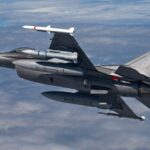The oxygen generating systems for pilots aboard the F-22 and F-35 are “very different,” but Lockheed Martin [LMT] evaluates the lessons learned on the F-22 to ensure problems do not arise on its latest fighter jet, the company said yesterday. Lockheed Martin’s statement came after a Sunday report on CBS 60 Minutes that included two F-22 pilots. The pilots said they and others refuse to fly the advanced stealth fighter because of fear the oxygen system does not work properly,…
Contract Updates
CORRECTION: The contract announced on Sept. 29 2025 (for A-GAS US Inc., Bowling Green) – $31,442,629
CORRECTION: The contract announced on Sept. 29, 2025, for A-GAS US Inc., Bowling Green, Ohio (SPE4A7-25-D-0386) for $31,442,629 was not awarded.
UPDATE: Somo Lens LLC (Santa Fe Springs, California (SPE2DF-26-D-0004) – $37,500,000)
UPDATE: Somo Lens LLC,* Santa Fe Springs, California (SPE2DF-26-D-0004, $37,500,000) has been added as an awardee to the multiple award contract for optical lens program for the Defense Logistics Agency Electronic Catalog, issued against solicitation SPE2DE-24-R-0002 and awarded on May…
UPDATE: Hologic Sales and Service LLC (Marlborough, Massachusetts (SPE2D1-26-D-0005) – $95,000,000),
UPDATE: Hologic Sales and Service LLC, Marlborough, Massachusetts (SPE2D1-26-D-0005, $95,000,000), has been added as an awardee to the multiple award contract for medical equipment and accessories for the Defense Logistics Agency Electronic Catalog, issued against solicitation SPE2DH-21-R-0002 and awarded Feb.…
Vertex Aerospace LLC (Madison, Mississippi) – $
Vertex Aerospace LLC, Madison, Mississippi, was awarded an undefinitized contract action with a not-to-exceed price of $ 20,995,905 for F-16 Systems Program Office Foreign Military Sales (FMS) support. This contract action involves FMS support for contractor logistics support (CLS) for…













